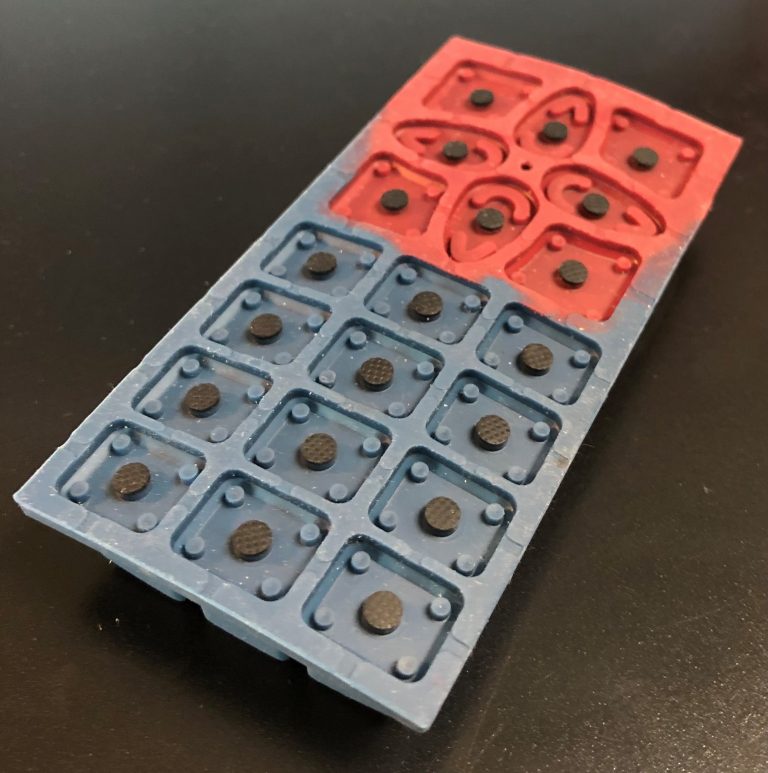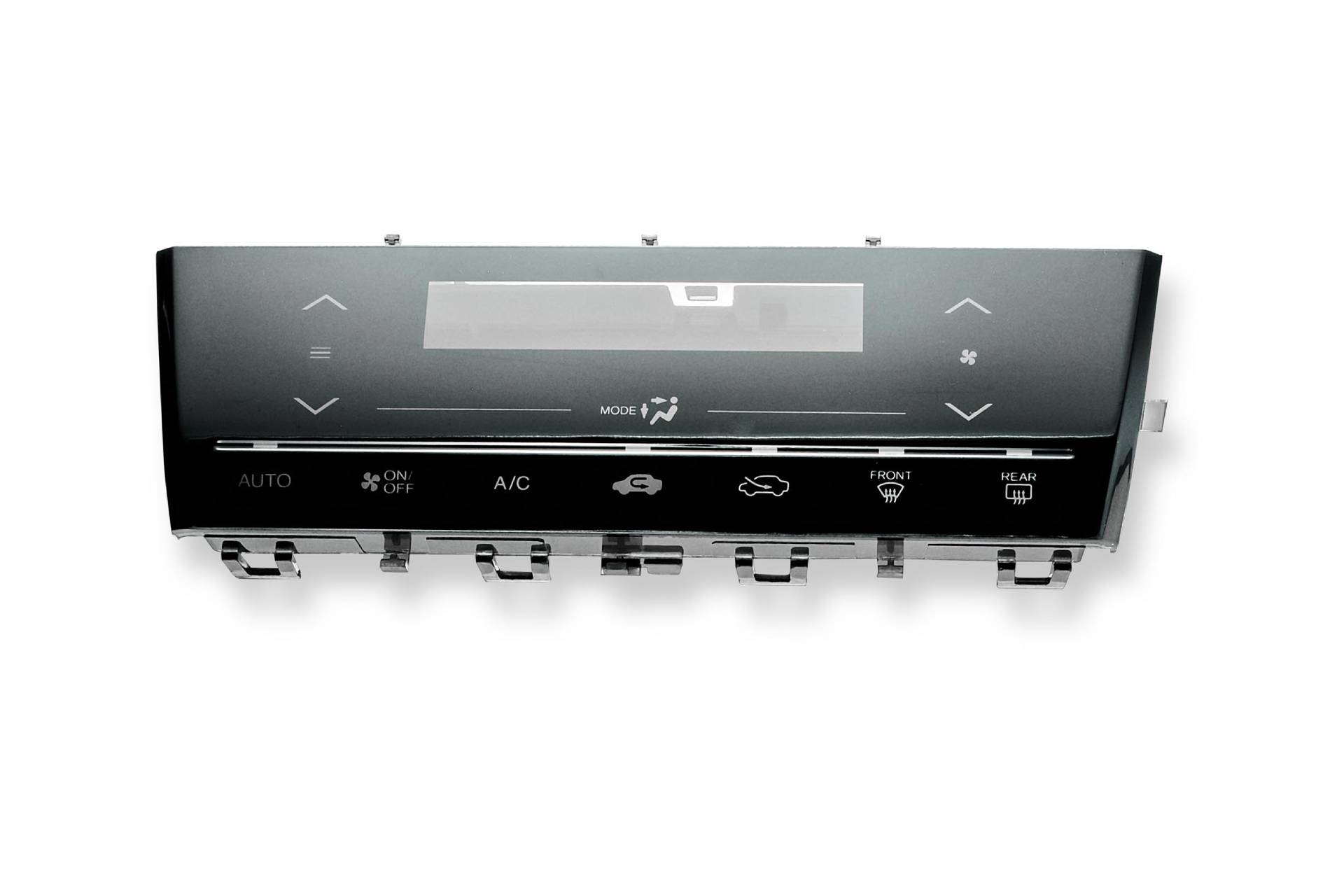A Comprehensive Guide to the Production and Handling of Rubber Keypads for Ideal Efficiency
The production and handling of rubber keypads play an essential function in their performance and functionality. Product choice, layout precision, and sophisticated manufacturing methods considerably affect their toughness and performance. Comprehending these components is vital for developing high-quality products. As numerous advancements emerge in this field, discovering their effects can disclose brand-new standards for capability and individual experience. What essential aspects will shape the future of rubber keypads?
Comprehending Rubber Keypads: Products and Types
Rubber keypads are important elements in many devices, offering a balance of resilience and tactile feedback. These keypads are mostly made from silicone or synthetic rubber, products picked for their flexibility and resilience. Silicone rubber, particularly, is preferred for its excellent temperature resistance and long life, making it ideal for numerous applications, from customer electronic devices to commercial machinery.
There are several kinds of rubber keypads, consisting of dome switch keypads, which utilize a dome-shaped device that supplies responsive comments when pressed. Additionally, there are likewise flat keypads, which include a smooth surface area and are usually utilized in medical gadgets and remote controls. The option of product and kind influences the keypad's performance, feel, and general customer experience. Understanding these facets is essential for producers and designers aiming to create efficient and dependable interfaces in their items.
The Manufacturing Refine: From Design to Production
The production process of rubber keypads involves a number of crucial phases, starting with layout and finishing with production. At first, developers produce detailed specs and models, guaranteeing the keypad fulfills aesthetic and functional requirements. Computer-aided style (CAD) software program is frequently used to visualize the layout and functions prior to continuing.
As soon as the style is settled, material choice is essential, with alternatives normally including silicone or all-natural rubber. In the following phase, molds are developed based on the authorized designs, which will shape the keypads during manufacturing.
Adhering to mold and mildew creation, the production phase starts, where rubber is combined with ingredients to enhance efficiency. The combination is then poured into molds and subjected to heat and pressure, allowing it to solidify and heal.
The finished keypads undertake quality checks to confirm they satisfy well established criteria, followed by product packaging for distribution. This all-encompassing process warranties peak efficiency in the last item.
Key Strategies in Rubber Molding
In the domain name of rubber keypads, numerous molding methods play a crucial role in identifying the high quality and capability of the final item. One common approach is compression molding, where raw rubber is positioned in a heated mold and mildew and pressure is applied, enabling reliable automation and harmony. An additional significant technique is injection molding, which entails infusing heated rubber into a mold and mildew, offering higher precision and complex shapes. Transfer molding, a hybrid of both methods, is also made use of, specifically for intricate styles, as it incorporates the benefits of both procedures. Additionally, fluid silicone rubber (LSR) molding is gaining grip as a result of its adaptability and toughness, making it excellent for high-performance applications. Each strategy possesses one-of-a-kind qualities, affecting factors such as cycle time, product waste, and manufacturing costs. Choosing the ideal molding method is crucial for attaining peak performance in rubber keypads.
Surface Area Finishing and Texturing Options
Surface area completing and texturing options play a vital duty in boosting the responsive experience and visual allure of rubber keypads. Makers use numerous strategies to develop distinct surface area qualities that influence individual interaction and product design. Common ending up techniques consist of matte, glossy, and satin finishes, each offering different visual results and grip degrees. Texturing alternatives, such as raised patterns, grooves, or stippling, better boost functionality by enhancing traction and reducing slippage throughout use.
Additionally, particular structures can be customized to satisfy ergonomic requirements, supplying comfort during long term usage. The option of surface coatings and textures can be affected by the designated application of the keypad, whether it be for consumer electronics, vehicle controls, or industrial devices. Inevitably, cautious factor to consider of these options contributes substantially to user fulfillment and general item efficiency, making them critical elements in the layout and manufacturing process of rubber keypads.
Top Quality Control Steps in Rubber Keypad Production
Quality assurance procedures in rubber keypad manufacturing are vital for making sure product reliability and performance. These measures incorporate product option criteria, strenuous testing treatments, and rigid last examination standards. Together, they develop an extensive structure that helps manufacturers support top quality throughout the production procedure.

Product Selection Requirements
Picking the ideal materials for rubber keypads is necessary, as it directly impacts their individual, capability, and resilience experience. Key standards for material selection include tensile stamina, durability, and ecological resistance. The choice of rubber compound, such as silicone or thermoplastic elastomer (TPE), plays a vital role in attaining desired tactile responses and durability. Furthermore, elements like chemical compatibility, temperature security, and UV resistance have to be thought about to guarantee optimal performance in numerous applications. Manufacturers should additionally assess the simplicity of handling and cost-effectiveness of products, stabilizing high quality with spending Read Full Article plan restraints. Ultimately, the right product choice not only improves the keypad's efficiency but additionally contributes to total item high quality and customer complete satisfaction.
Checking Procedures Applied
After identifying the suitable materials for rubber keypads, rigorous testing procedures are executed to confirm that the final items satisfy market standards and consumer expectations. These procedures usually include mechanical screening, which reviews the sturdiness and flexibility of the rubber under different problems. In addition, ecological testing examines the keypads' performance under temperature level variations, moisture, and exposure to chemicals. Electrical testing confirms the keypads work correctly with electronic components, confirming responsiveness and conductivity. Responsive responses is examined to guarantee customer contentment. These considerable testing steps are essential in recognizing any kind of issues or variances prior to mass production, ultimately boosting the dependability and efficiency of rubber keypads in their designated applications.

Final Evaluation Standards
Comprehensive last assessment requirements are crucial in rubber keypad production to assure that each system meets the defined standards for performance and look. This process generally entails visual assessments to determine any kind of surface area issues, such as discoloration or imperfections. Furthermore, responsive analyses identify that the keypads respond precisely to touch, preserving the needed level of level of sensitivity. Resilience tests may also be carried out, imitating prolonged usage to verify the long life of the keypad under different conditions. Adherence to industry guidelines and customer specs is verified to maintain high quality assurance. By implementing these extensive inspection actions, manufacturers can considerably minimize the threat of problems, ensuring that the end product is reputable and fulfills consumer assumptions, ultimately boosting customer satisfaction.
Technologies in Rubber Keypad Innovation
As innovation remains to progress, innovations in rubber keypad innovation are improving interface across numerous industries. One considerable development is the combination of capacitive touch sensors within rubber keypads, enabling an extra responsive and versatile individual experience. This innovation allows customers to engage with tools through touch, enhancing functionality without giving up the responsive feedback that rubber keypads are understood for.
Furthermore, enhancements in material solutions have resulted in the growth of even more durable, weather-resistant rubber, making keypads suitable for exterior and commercial usage. Enhanced printing methods likewise enable high-resolution graphics and backlighting options, raising visibility and aesthetic charm.

Advancements in manufacturing processes, such as 3D printing, are allowing personalized designs and quick prototyping, enhancing manufacturing timelines. These advancements collectively contribute to extra efficient and easy to use rubber keypads, guaranteeing they fulfill the demands of modern-day applications while preserving i loved this their core advantages.
Finest Practices for Design and Performance
Creating effective rubber keypads requires cautious examination of both appearances and performance. Rubber Keypads. A properly designed keypad ought to balance ergonomic principles with visual interest improve individual experience. Secret factors consist of dimension, shape, and spacing of buttons, guaranteeing they are very easy to press while avoiding unintended activation. Using contrasting shades and appearances can enhance exposure and tactile feedback, assisting customers in comparing keys
Furthermore, the selection of materials plays a vital role; top quality rubber substances can enhance durability and resistance to use. It is likewise crucial to consider the combination of features such as backlighting and custom-made graphics, which can improve usability in different environments.
Finally, prototyping and customer screening are indispensable in the style procedure, permitting adjustments based upon real-world feedback. By adhering to these ideal methods, makers can develop rubber keypads that not just look enticing yet likewise satisfy the practical requirements of individuals successfully.
Often Asked Questions
How Do I Select the Right Rubber Material for My Keypad?
To pick the ideal rubber material for a keypad, one ought to take into consideration factors such as longevity, environmental resistance, tactile responses, and compatibility with the intended application, ensuring ideal performance and individual complete satisfaction in different problems.
What Are the Ecological Influences of Rubber Keypad Production?
Rubber keypad manufacturing can result in environmental effects such as logging for all-natural rubber resources, contamination from chemical procedures, and waste generation. Lasting practices and products can reduce several of these unfavorable effects on communities.
Can Rubber Keypads Be Recycled or Recycled?
Rubber keypads can be recycled, however the process depends on the specific materials used in their production. Recycling them in different applications is also possible, adding to throw away decrease and promoting sustainability in making methods.
What Is the Typical Life Expectancy of a Rubber Keypad?
The typical lifespan of a rubber keypad usually ranges from 5 to 10 years, relying on usage, environmental factors, and maintenance. Regular treatment can expand its functionality, while extreme wear might shorten its durability.
Are There Any Health Issues Associated With Rubber Keypad Materials?
There are possible wellness worries connected to rubber keypad click over here materials, consisting of allergies to specific chemicals and toxic irritants utilized in production. Proper handling and recognition of product composition can mitigate these dangers for individuals.
There are numerous kinds of rubber keypads, consisting of dome switch keypads, which make use of a dome-shaped system that offers responsive responses when pressed. Selecting the suitable products for rubber keypads is crucial, as it directly affects their sturdiness, individual, and capability experience - Rubber Keypads. After figuring out the proper products for rubber keypads, extensive testing treatments are executed to verify that the last items meet market criteria and client assumptions. Rubber keypad manufacturing can lead to ecological effects such as deforestation for natural rubber resources, air pollution from chemical processes, and waste generation. Rubber keypads can be recycled, but the process depends on the specific materials made use of in their production